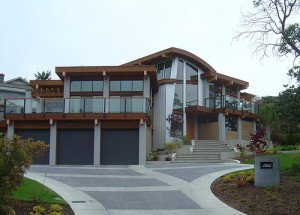 On Twitter, I asked if anyone had any financial related questions that they would like answered. Explaining that a good question will get its own blog post.
On Twitter, I asked if anyone had any financial related questions that they would like answered. Explaining that a good question will get its own blog post.
A friend responded…
“We’re looking to buy a home. We can manage to put 10%, but not the full 20%. Should we stick with just 10% or try and max out as much as we can? I.E. putting down 14%, 15%, 16%…”
This was a difficult question and one that I recently went through myself. Therefore, I felt that I could provide a decent explanation of the thought process that my wife and I went through in our home buying decision.
For this example, lets assume:
Gross Income = 80,000 a year or $6,667 a month
House = $250,000
Interest Rate = 30 years at 5%
Property Taxes = $3,600
Property Insurance = $1,200 a year
Private Mortgage Insurance = $60 a month per $100,000 financed
Quick Introduction To The Home Buying Process
The first step to buying a home is getting qualified for a loan. There are a few ways you can do this.
You will qualify you for a loan based on your many factors. The most important factors are your credit score and gross income.
Our combined income and credit score qualified us for a home loan about $70,000 higher than the purchase price of the house we ended up buying. Our goal was to keep our home debt to income ratio to 28%.
A mortgage payment, which is paid monthly, consists of four different parts. This is often referred to as PITI.
- Principal - The principal payment reduces the amount you owe on the house.
- Interest – The interest payment goes to the bank for the right to borrow the money.
- Taxes – For most homebuyers, property taxes are paid to your lender in an escrow account. The lender will then pay your property taxes when due.
- Insurance - Insurance payments are also included in to an escrow account with your lender, which is then paid to your insurance company.
If you’re not able to put down a full 20% on a home, an extra payment will be added to your monthly mortgage known as private mortgage insurance or PMI. Once you own 20% of your home, you will no longer have to pay PMI.
PITI plus PMI with a 10% down payment
I used this PITI Calculator to calculate the monthly PITI, from the example above then added in PMI.
Principal and Interest = $1,207.84
Property Taxes = $300
Insurance = $100
PMI = ((250,000-(250,000*10%))/100,000*60=$135 a month
Total Monthly Payment = $1,742.84
PITI plus PMI with a 15% down payment
Principal and Interest = $1,140.74
Property Taxes = $300
Insurance = $100
PMI = ((250,000-(250,000*15%))/100,000*60 = $127.5 a month
Total Monthly Payment = $1,668.23
Personal Finance Ratios
With a 10% down payment, the total monthly payment is $1,742.84. Therefore, the home debt to income ratio would be 26%. Under the recommended 28%.
A 15% down payment is equal to a ratio of 25%. Which is just a little bit less of a monthly payment. However, the big advantage is that PMI would be eliminated a lot quicker on with the higher down payment. Saving you over $100 a month.
How Much To Put Down
Back to the original question. Should the potential homeowners, put down 10% or attempt to max out the down payment?
Here would be my thought process, I would put down as much as possible after weighing in these three factors.
First, is there any high interest debt including credit card, car, etc? If so, pay that off now. Decrease your down payment by any amount you used to pay off the debt.
Second, do you currently have an emergency fund of 3 to 6 months of expenses? If an emergency fund isn’t established, build up at least 3 months of expenses. Decrease your down payment by the amount used to start an emergency fund.
Third, any amount still left over use to max out Roth IRAs for the year. Why? A Roth IRA invested in a good target retirement fund is a better investment than real estate. Plus, there is only a limited amount of time to take advantage of compound interest for retirement.
Use the amount left after going through the above three steps to increase your down payment from 10%.
Once you start paying monthly payments, commit any extra money to paying off principal. Don’t settle for paying the minimum payments each month. You target is to have 20% of the home paid off as soon as possible.
If you ever have any financial questions like the one above, feel free to contact me or send me a message on Twitter.
{ 1 comment }
When it comes to dealing with a mortgage the banks do appreciate when you put down around 20% of the total price as it means that the banks lend you less money towards the property and reward you usually with lower interest rate. But if find your dream home that you must have then it’s a personal decision because it could cost you more in the future if you don’t have the greatest financial backing behind you.
Comments on this entry are closed.